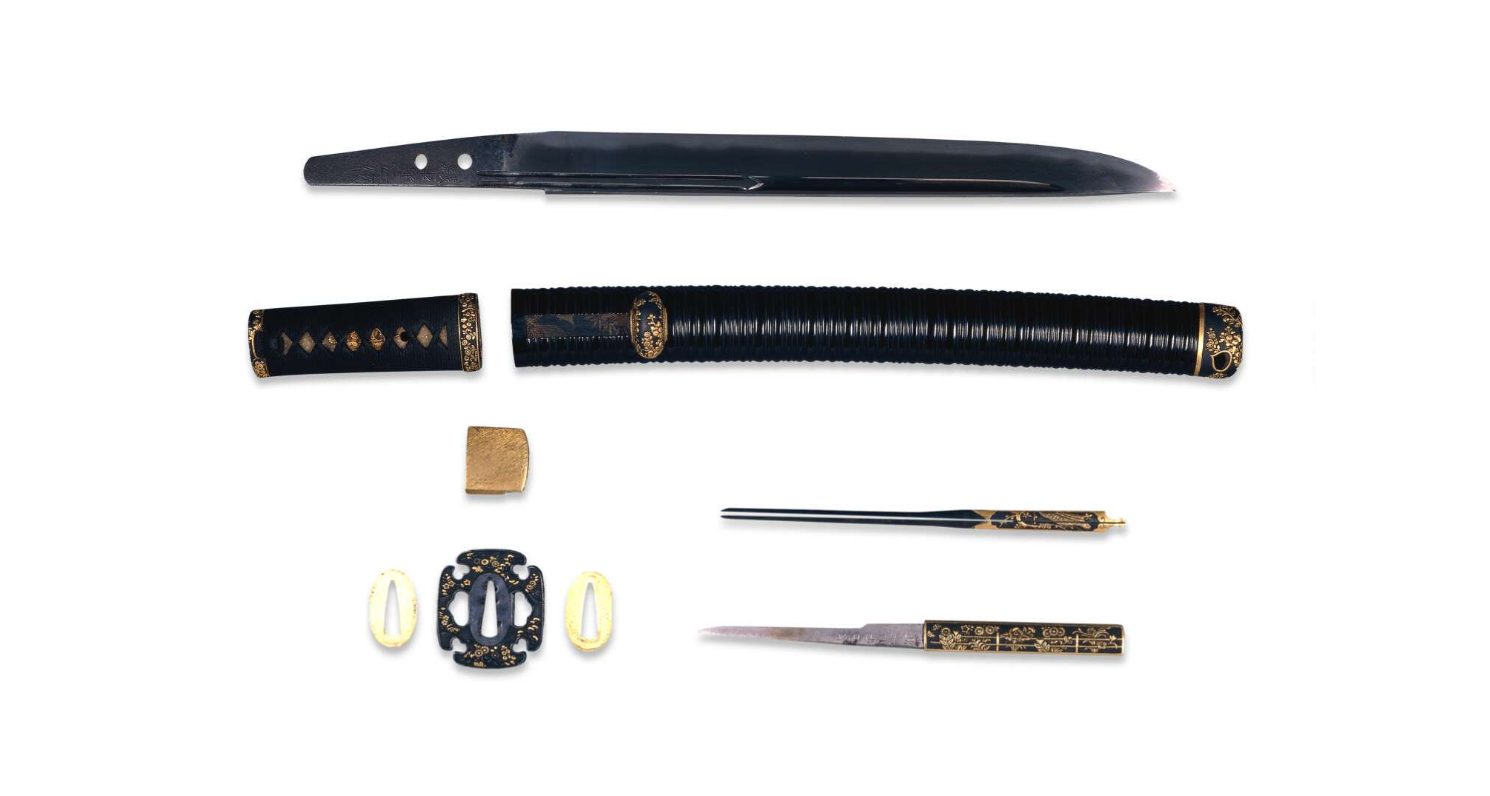Skip to main content
Kozuka; kogai (wari)
- Description
- Kozuka; kogai (wari). Part of wakizashi mounting. Chrysanthemums in trellises in gold high-relief inlay on shakudo nanako ground. Made of overlaid copper.
- This is made out of copper, gold and shakudo
-
- Curator's comments
- Smith et al 1990
-
- The 'wakizashi' (companion sword) is worn at all times when indoors, and outdoors when the longer 'katana' is also carried. This example is broad-bladed in Momoyama style, with a gently undulating 'hamon' of 'nie'. It is decorated with a single groove on one side, and a stylised 'ken' (double-edged ritual sword in esoteric Buddhism) on the other.
-
- Harris 2005
This blade is 'kawarigata zukuri' (literally 'of unusual shape'). The 'omote' is 'hira zukuri', and on the 'ura' the 'shinogi ji' slopes down to the centre of the 'mune' from the upper part of the blade, so that the shape resembles a 'naginata'. The blade has been very slightly shortened and the almost unmodified tang has two holes with 'katte sagari' file marks and a 'kurijiri' tip. On the 'omote' there is a carving of a 'suken' located within a 'bohi', and on the 'ura' there is a 'vajra' with a 'soehi'. The grain is delicate 'itame with jinie'. The 'hamon' is irregular 'gunome' in 'nie' with 'ashi' and some gentle 'sunagashi'. The 'boshi' is 'notare' and returns somewhat sharply in the style known as 'sampin boshi'.
Masatoshi was the fourth son of Kanemichi of Seki, with whom he moved to Kyoto sometime in the early 1590s. His elder brother Kimmichi worked in the original Mino style after the work of the fourteenth-century Shizu smiths, and his descendants continued in Kyoto for several generations. The third brother Tamba no kami Yoshimichi worked variously in the Shizu, Yamato and Soshu styles, and developed the characteristic 'sudareba' (a type of layered 'hamon' resembling 'sudare', i.e. hanging bamboo curtain), which is found on the work of his descendants. Masatoshi was given the title 'Etchu no kami', probably after arriving in Kyoto, and his son received the title a few decades later. Although the signatures of the first two generations are not dissimilar, this blade is very much in the Momoyama shape, confirming that it is by the first Masatoshi.
The ribbed scabbard (also col. pls 19-20) is lacquered black. The fine matching metal fittings have chrysanthemums and other autumn flowers in gold high-relief inlay on a 'shakudo nanako' ground. The 'kozuka' and 'wari-kogai' have chrysanthemums in trellises. These are of seventeenth- or eighteenth-century Mino-school work.
-
- Exhibition history
- Exhibited:
2006 Oct 13-, BM Japanese Galleries, 'Japan from prehistory to the present'
-
- Acquisition date is 1958 and was made in Asia
-
-
- Museum number
- 1958,0730.46.c
